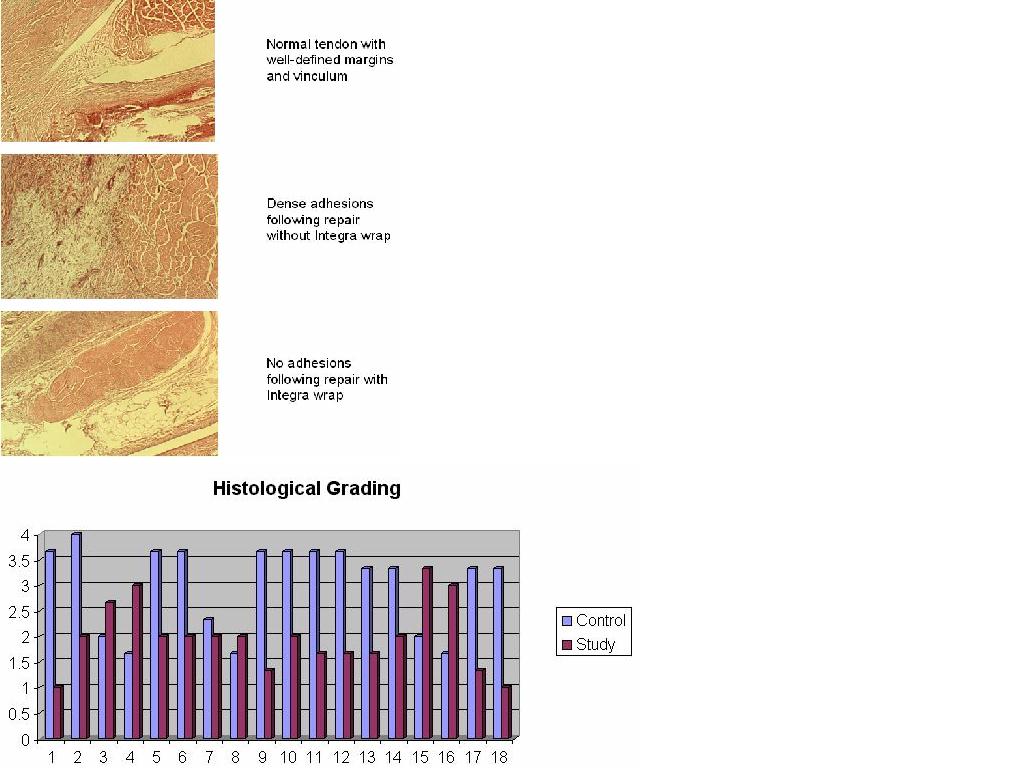Tuesday, September 27, 2005
8591
Integra as a Biomehcanical Barrier to Reduce Post-Operative Tendon Adhesions
Post-operative tendon adhesions formation is the commonest and disabling complication following tendon surgery. Improved surgical techniques and physical therapy regimens have improved the functional outcome but still adhesions are common. We have tried to histologically assess the effects of IntegraŽ as a biomechanical barrier around tendon repair site. Methods: 18 male white leg-horn chickens were opertaed under anesthesia according to IACUC guidelines. 2nd and 4th toes were utilized. Long flexor tendons were exposed over proximal phalanx and shraply divided. Half the toes received a modified Kessler's repair as a standard of mehod. The other toes were repaired with same surgical technique but a piece of Integra (dermal component only) was wrapped around site of repair. After 21 days of immobilization with splint and post-operative care, the animals were euthenized and specimens were histologically reviewd by three different observers for adhesions formation around the repair site. All the histological specimen were graded from 1-5 according to severity of adhesions. An average of grade was derived for each specimen and the two groups were compared for statisitcal difference using t-test. Histological review showed that adhesion formation was significantly lower in Integra wrapped group than controls. (Integra group- mean 1.9, Controls- mean 3.1, p < 0.05). Conclusions: Integra may help reduce formation of post-operative adhesions when used as a biomechanical barrier. Further studies in to the strength of repair and mechanical properties of glide and adhesions are required.

View Synopsis (.doc format, 332.0 kb)
See more of Hand, Upper Extremity/Microsurgery
Back to 2005am Complete Scientific Program
